Andreas Maier wurde als Präsident des Medical Data Donors e.V. wiedergewählt!
Prof. Dr. Andreas Maier wurde am 26. November 1980 in Erlangen geboren. Er studierte Informatik, schloss sein Studium 2005 ab und promovierte im Jahr 2009. Von 2005 bis 2009 war er am Pattern Recognition Lab am Lehrstuhl für Informatik der Universität Erlangen-Nürnberg tätig. Sein Hauptforschungsgebiet war die medizinische Signalverarbeitung von Sprachdaten. In dieser Zeit entwickelte er das erste Online-Tool zur Beurteilung der Sprachverständlichkeit – PEAKS – mit dem bisher über 4.000 Patienten- und Kontrollpersonen analysiert wurden.
Von 2009 bis 2010 forschte er als Post-Doc am Radiological Sciences Laboratory im Department of Radiology der Stanford University am Flat-Panel-CT-Bogen. Von 2011 bis 2012 war er bei Siemens Healthcare als Innovationsprojektleiter für Rekonstruktionsthemen in der Business Unit Angiography and X-ray verantwortlich.
Im Jahr 2012 kehrte er als Leiter der Arbeitsgruppe Medizinische Rekonstruktion im Labor für Mustererkennung an die Universität Erlangen-Nürnberg zurück. 2015 wurde er Professor und Leiter des Pattern Recognition Labs. Seit 2016 ist er Mitglied des Lenkungsausschusses des European Time Machine Consortiums. 2018 erhielt er einen ERC Synergy Grant “4D nanoscope”. Aktuelle Forschungsinteressen liegen in den Bereichen medizinische Bildgebung, Bild- und Audioverarbeitung, Digital Humanities sowie interpretierbares maschinelles Lernen und die Verwendung bekannter Operatoren.
Andreas Maier was re-elected as the president of Medical Data Donors e.V.!
Prof. Dr. Andreas Maier was born on 26th of November 1980 in Erlangen. He studied Computer Science, graduated in 2005, and received his PhD in 2009. From 2005 to 2009 he was working at the Pattern Recognition Lab at the Computer Science Department of the University of Erlangen-Nuremberg. His major research subject was medical signal processing in speech data. In this period, he developed the first online speech intelligibility assessment tool – PEAKS – that has been used to analyze over 4.000 patient and control subjects so far.
From 2009 to 2010, he started working on flat-panel C-arm CT as post-doctoral fellow at the Radiological Sciences Laboratory in the Department of Radiology at the Stanford University. From 2011 to 2012 he joined Siemens Healthcare as innovation project manager and was responsible for reconstruction topics in the Angiography and X-ray business unit.
In 2012, he returned the University of Erlangen-Nuremberg as head of the Medical Reconstruction Group at the Pattern Recognition lab. In 2015 he became professor and head of the Pattern Recognition Lab. Since 2016, he is member of the steering committee of the European Time Machine Consortium. In 2018, he was awarded an ERC Synergy Grant “4D nanoscope”. Current research interests focuses on medical imaging, image and audio processing, digital humanities, and interpretable machine learning and the use of known operators.

